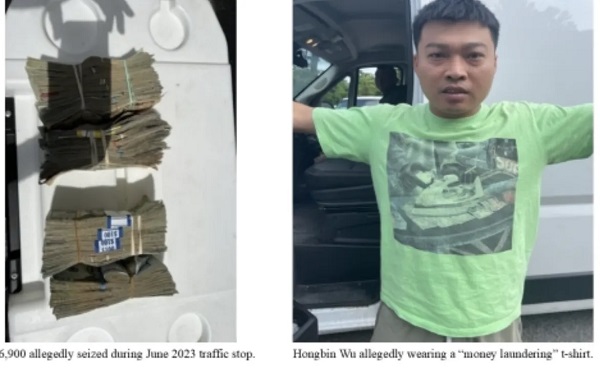Censorship Industrial Complex
Rise in arson coincides with residential school murders claim
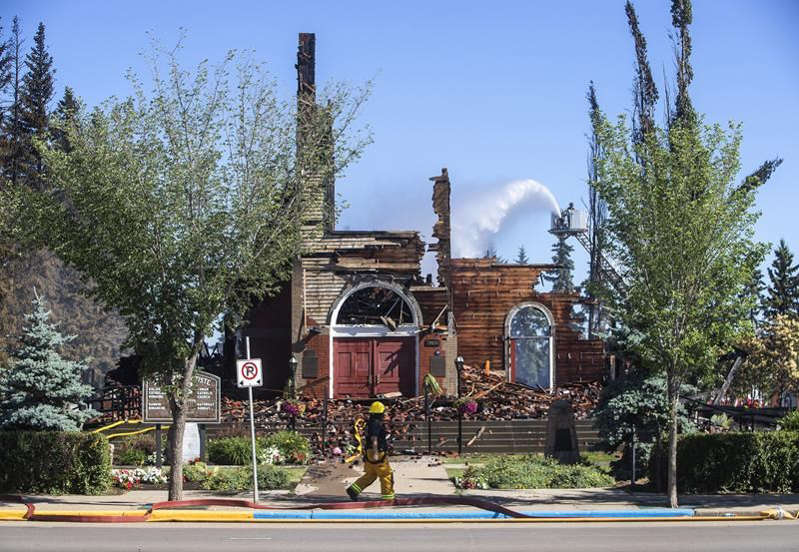
Morinville, Alberta’s 114 year old Jean Baptiste Catholic Church was destroyed by arson in June 2021
From the Frontier Centre for Public Policy
Staggering Number of Churches Burned, More Than Thought
Blacklocks reports that since 2010, when the Truth and Reconciliation (TRC) commissioners began making the claim in interviews and in interim reports that thousands of indigenous children had died at residential schools under suspicious circumstances, more than 400 Christian churches have burned in Canada.
Those allegations were false, and based on a conspiracy theory.
But, the church burnings increased significantly after the May 27, 2021 Kamloops announcement ramped up that claim to an actual accusation by the Tk’emlups Indian band that 215 children had died under sinister circumstances, and were buried by priests in secrecy on the school grounds — “with the forced help of children, as young as six”.
Where did that Tk’emlups story come from? Most importantly, why would anyone believe such obvious nonsense?
The conspiracy theory that launched the entire missing children claim was largely created out of whole cloth by a defrocked United Church minister, named Kevin Annett.
For reasons that defy rational explanation this unusual man made it his life’s work to take the alcoholic ramblings of a few Vancouver east side street residents, polish them up, and present them as fact to the world.
For example, he repeated the story that Queen Elizabeth had kidnapped ten children from the Kamloops school, and those children were never seen again. He also repeated stories about priests clubbing students to death and throwing them into graves dug by other students, dead boys hanging on meathooks in barns, and babies thrown into furnaces by priests and nuns. Respected investigative reporter Terry Glavin, exposed Annett as a crank, and debunked Annett’s wild stories in detail in a 2008 Tyee article. Annett’s stories are so obviously fake that it seems incredible that anyone believed them.
But they did. In fact some of the people who fell for these stories occupied important positions. One was Gary Merasty, a Member of Parliament. Merasty became so convinced that these claims, as presented in Kevin Annett’s most famous documentary, “Unrepentant” were true, that he was able to convince the Assembly of First Nations (AFN) and other important politicians that the newly appointed TRC commissioners must look into Annett’s claims.
The newly appointed TRC commissioners unwisely accepted this new area of study, despite that fact that they had no mandate to do so. When the federal government refused their request for a mandate and funds to search for these phantom “missing children” they ignored the rebuff, and pursued the subject anyway.
It appears from their statements on the subject that they completely bought into the Annett conspiracy theory. Commissioner Murray Sinclair gave many interviews about these supposedly “missing children” and hinted frequently that dark forces were at play.
He even alleged — on absolutely no evidence — that so many deaths occurred at residential schools that the federal government conspired to keep the information from the Canadian public after 1920. Then he upped his death number — again with no evidence to support his claim — to over 6,000. All of this alarming rhetoric was heard across Canada, but particularly within increasingly outraged indigenous communities.
Following the Kamloops announcement he took this rhetoric up to alarming new heights — suggesting that “15-25,000, maybe more” deaths, some deliberate — took place at the schools.
For her part, Commissioner Marie Wilson actively promoted the myth that thousands of children came to the schools, and were never seen again. According to Wilson these children simply disappeared. (She did not explain why there was not even one complaint from a parent that their child had gone missing or discuss cause of death.)
The mainstream media, meanwhile, did not question any of these always improbable claims. Quite the contrary, they not only played along with these baseless claims, but actively encouraged them. It did not seem to occur to them that they were actively supporting a conspiracy theory.
So, it should really come as no surprise that on May 27, 2021 when Chief Casimir made her false claim — that the “remains of 215 former students of KIRS” had been found — there was absolutely no pushback or questioning of what should have seemed to Canadians like a bizarre claim. Instead, the media – including the once prestigious New York Times — actively amped up the rhetoric, and added their own claims about “mass graves found.”
Trudeau and his ministers — especially Marc Miller — made matters immeasurably worse by immediately ordering all federal flags to be flown at half mast, and promising enormous amounts of money to any other indigenous community that wanted to make a similar claim.
The truth is that the TRC’s missing children wild goose chase had thoroughly captivated journalists, and entire indigenous communities, to the extent that the baseless Tk’emlups claim seemed to make sense to them. Justin Trudeau and his ministers were in that gaggle of gullibles. Canada became the laughing stock of the world for dumbly accepting these wild claims.
All along, there have been a few brave souls who have tried to question a residential school narrative that was increasingly getting out of control.
Remember Senator Lynn Beyak? She was forced out of the senate essentially for telling the truth — namely that many children benefitted from their residential school educations, and that the TRC should have said so. She acknowledged that many children were hurt by their experiences there, but insisted that both the good and the bad should have been told. For that bit of common sense she was relentlessly attacked by a partisan media, expelled from the Conservative caucus, and forced into retirement.
Most recently, a retired professor emeritus, Rod Clifton, who spoke about his positive experiences working at a northern residential school, and explained why the claims that residential school students were murdered and secretly buried could not possibly be true, had his True North interview removed by a social media company on the grounds that it was “hate speech”.
Never mind that he was recounting his personal experience at the school. Never mind that his wife and son are indigenous. The professor dared to speak against an orthodoxy that tolerates no dissent.
Meanwhile, the mainstream media reporting about residential schools has become increasingly extreme. Fabulists, like Kevin Annett and other opportunists, have built careers for themselves writing exaggerated, or even completely made up stories about residential school “horrors” and “atrocities.” Instead of being accurately portrayed as the flawed attempts at indigenous education that they were, they are now presented as virtual charnel houses, where children were tortured and murdered.
As stated, all of this heated rhetoric went into overdrive on May 27, 2021, when Chief Rosanne Casimir falsely claimed that “the remains of 215 children” had been found on the grounds of the former Kamloops Indian Residential School (KIRS). In fact, no such remains had been found. The only “evidence” for her claim were stories the people in the community had told themselves, and radar blips (soil anomalies) that an inexperienced radar operator had misinterpreted as possible graves.
There was absolutely no reason why Casimir’s claim should have been taken seriously in 2021. Historical records clearly show that the children who died of disease or accident while attending residential school were all given Christian burials, with their deaths properly recorded. Most were buried by their families in their home communities. In short, there is no historical evidence that even one residential school student died under sinister circumstances, or was buried in secrecy.
But instead of refuting Casimir’s claim, or asking even the most basic questions, the Trudeau government and its CBC ally simply accepted the claim as true.
And since that time, both the Trudeau government and CBC have doubled down on their refusal to correct the misinformation that they have promoted.
In fact, the Senate is now considering ways to make people like Senator Lynn Beyak and Professor Clifton criminals. They want to criminalize any “residential school denier” who dares to doubt the truth of anything that a residential school “survivor” has alleged.
This would include, for example, anyone who dared to disagree with the two Tk’emlups people who claim that they were the “children as young as six” who in the 1960s were forced to dig graves for priests who had somehow killed their comrades, and were now burying them in secrecy.
Those two people are still alive. Have they been interviewed by the RCMP? We do not know.
Why are their identities not being revealed by Casimir and her associates? Again, we do not know. Why has CBC, or others not interviewed these two people about their sensational claim? Again, we are offered no explanation by CBC.
This would also mean that anyone disagreeing with any of the claims of “survivors” such as Billie Coombes, or any of Kevin Annett’s wild stories could face criminal prosecution.
And why did Chief Casimir claim that the “remains of 215 children” had been found, when that was clearly a false claim. Only soil anomalies, which are almost certainly from a 1924 sewage trench were found. Why did it take three years for the T’Kumlups band to confess that no human remains were found?.
Instead, we are left in limbo on the most sensational crime story in Canadian history. 215 — then thousands — of indigenous children were somehow killed and secretly buried at residential schools all across the country? (Former National Chief RoseAnne Archibald says “tens of thousands”, former TRC Commissioner Murray Sinclair says “15-25,000, maybe more.”) Rather than trying to investigate this story by vigorously questioning people making these sensational claims the RCMP sit on their hands in their offices, CBC steadfastly refuses to ask any questions. And our own government threatens to make criminals of any retired professors or others who dare to ask questions about it.
Meanwhile, the Tk’emlups band received (and apparently spent) $8,000,000 from the federal government for making a false claim.
The TRC accused Canadian priests, nuns, teachers and staff at residential schools of somehow being responsible for the disappearance of thousands of indigenous children who attended the schools. That is a shocking accusation. But it is even more shocking that the accusation was made with no real evidence to support it. Chief Rosannne Casimir went even further. She accused those people —who are no longer here to defend themselves — of murder and secret burial. Now, the federal government wants to stop Canadians from even talking about these sensational and baseless claims.
The next logical step for them is to stop Canadians from even knowing about it. That’s exactly what they are doing in every school in the country — misinforming every Canadian school child by telling them that the Kamloops claim is true.
And that is probably what Ottawa has in mind, with the new “digital safety officer” contemplated in Trudeau’s truly frightening Online Harms Act. Truth-telling senators and professors will be silenced. Then the truth will be what lies in unmarked graves.
The church burnings are only the outward manifestation of this larger evil. Canadians are being deliberately deceived by their own government, the indigenous leadership, and our own media. The Trudeau Liberals have actively pursued a policy that has both encouraged, and then kept alive a conspiracy theory — namely, that residential school priests, nuns and teachers were responsible for the deaths and secret burials of the children placed in their care. The indigenous leadership has exploited an obviously false claim — pocketing a mountain of tax dollars, while our moribund mainstream media sits in silence.
Lewis Carroll wrote about an upside down world in Alice in Wonderland. He would immediately understand what is happening in Canada today.
We have a sitting government actively promoting a conspiracy theory, while threatening to criminalize anyone who tries to expose it. We have an RCMP that refuses to do its job, and conduct an investigation that would quickly tell Canadians that there are no secretly buried children at Kamloops. We have CBC and most of the mainstream media asking no questions about the biggest news story in Canadian history. And we have countless grifter writers and academics who are building their careers repeating ghost stories, and pretending that they are telling the truth.
And the Tk’emlups band gets $8,000,000 for lying, while a professor and senator get cancelled for telling the truth.
As Jon Kay notes in his recent Quillette essay, an officially sanctioned lie — and that is exactly what the Kamloops claim has become — cannot endure forever.
At some point Canada must come to its senses.
First published in the Western Standard here.
Brian Giesbrecht, retired judge, is a Senior Fellow at the Frontier Centre for Public Policy.
Business
Trump slaps Brazil with tariffs over social media censorship
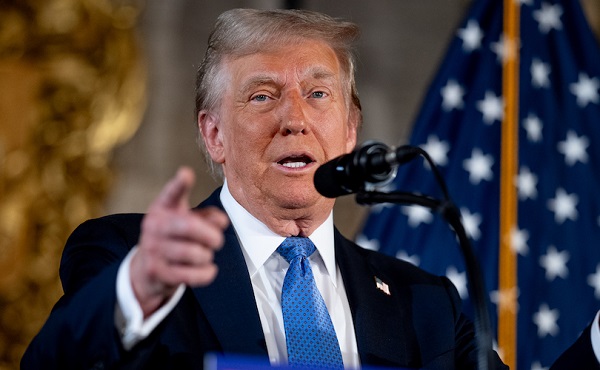
From LifeSiteNews
By Dan Frieth
In his letter dated July 9, 2025, addressed to President Luiz Inácio Lula da Silva, Trump ties new U.S. trade measures directly to Brazilian censorship.
U.S. President Donald Trump has launched a fierce rebuke of Brazil’s moves to silence American-run social media platforms, particularly Rumble and X.
In his letter dated July 9, 2025, addressed to President Luiz Inácio Lula da Silva, Trump ties new U.S. trade measures directly to Brazilian censorship.
He calls attention to “SECRET and UNLAWFUL Censorship Orders to U.S. Social Media platforms,” pointing out that Brazil’s Supreme Court has been “threatening them with Millions of Dollars in Fines and Eviction from the Brazilian Social Media market.”


Trump warns that these actions are “due in part to Brazil’s insidious attacks on Free Elections, and the fundamental Free Speech Rights of Americans,” and states: “starting on August 1, 2025, we will charge Brazil a Tariff of 50% on any and all Brazilian products sent into the United States, separate from all Sectoral Tariffs.” He also adds that “Goods transshipped to evade this 50% Tariff will be subject to that higher Tariff.”
Brazil’s crackdown has targeted Rumble after it refused to comply with orders to block the account of Allan dos Santos, a Brazilian streamer living in the United States.
On February 21, 2025, Justice Alexandre de Moraes ordered Rumble’s suspension for non‑compliance, saying it failed “to comply with court orders.”
Earlier, from August to October 2024, Moraes had similarly ordered a nationwide block on X.
The court directed ISPs to suspend access and imposed fines after the platform refused to designate a legal representative and remove certain accounts.
Elon Musk responded: “Free speech is the bedrock of democracy and an unelected pseudo‑judge in Brazil is destroying it for political purposes.”
By linking censorship actions, particularly those targeting Rumble and X, to U.S. trade policy, Trump’s letter asserts that Brazil’s judiciary has moved into the arena of foreign policy and economic consequences.
The tariffs, he makes clear, are meant, at least in part, as a response to Brazil’s suppression of American free speech.
Trump’s decision to impose tariffs on Brazil for censoring American platforms may also serve as a clear signal to the European Union, which is advancing similar regulatory efforts under the guise of “disinformation” and “online safety.”
With the EU’s Digital Services Act and proposed “hate speech” legislation expanding government authority over content moderation, American companies face mounting pressure to comply with vague and sweeping takedown demands.
By framing censorship as a violation of U.S. free speech rights and linking it to trade consequences, Trump is effectively warning that any foreign attempt to suppress American voices or platforms could trigger similar economic retaliation.
Reprinted with permission from Reclaim The Net.
Censorship Industrial Complex
Canadian pro-freedom group sounds alarm over Liberal plans to revive internet censorship bill

From LifeSiteNews
The Democracy Fund warned that the Liberal government may bring back a form of Bill C-63, which is aimed at regulating online speech.
One of Canada’s top pro-democracy groups has sounded the alarm by warning that the Canadian federal government is planning to revive a controversial Trudeau-era internet censorship bill that lapsed.
The Democracy Fund (TDF), in a recent press release, warned about plans by the Liberal government under Prime Minister Mark Carney to bring back a form of Bill C-63. The bill, which lapsed when the election was called earlier this year, aimed to regulate online speech, which could mean “mass censorship” of the internet.
“TDF is concerned that the government will try once more to give itself the power to criminalize and punish online speech and debate,” the group said.
“TDF will oppose that.”
According to the TDF, it is “concerned that the government intends to re-introduce the previously abandoned Online Harms Bill in the same or modified form.”
Bill C-63, or the Online Harms Act, was put forth under the guise of protecting children from exploitation online. The bill died earlier this year after former Prime Minister Justin Trudeau called the 2025 federal election.
While protecting children is indeed a duty of the state, the bill included several measures that targeted vaguely defined “hate speech” infractions involving race, gender, and religion, among other categories. The proposal was thus blasted by many legal experts.
The Online Harms Act would have censored legal internet content that the government thought “likely to foment detestation or vilification of an individual or group.” It would be up to the Canadian Human Rights Commission to investigate complaints.
The TDF said that Bill C-63 would have made it a criminal offense to publish ill-defined “harmful content.”
“It required social media companies to remove potentially harmful content or face punitive fines. Many defenders of civil liberty, including TDF, worried that the application of this badly defined concept would lead to mass surveillance and censorship,” the group said.
The TDF warned that under Carney, the government is “once again considering new or similar legislation to regulate online speech, with the Minister of Justice claiming he would take another look at the matter.”
Mark Joseph, TDF litigation director, pointed out that Canada already has laws that “the government can, and does, use to address most of the bad conduct that the Bill ostensibly targeted.”
“To the extent that there are gaps in the Criminal Code, amendments should be carefully drafted to fix this,” he said.
“However, the previous Bill C-63 sought to implement a regime of mass censorship.”
As reported by LifeSiteNews last month, a recent Trudeau-appointed Canadian senator said that he and other “interested senators” want Carney to revive a controversial Trudeau-era internet censorship bill that lapsed.
Another recent Carney government Bill C-2, which looks to ban cash donations over $10,000, was blasted by a constitutional freedom group as a “step towards tyranny.”
Carney, as reported by LifeSiteNews, vowed to continue in Trudeau’s footsteps, promising even more legislation to crack down on lawful internet content.
He has also said his government plans to launch a “new economy” in Canada that will involve “deepening” ties to the world.
Under Carney, the Liberals are expected to continue much of what they did under Justin Trudeau, including the party’s zealous push in favor of abortion, euthanasia, radical gender ideology, internet regulation and so-called “climate change” policies. Indeed, Carney, like Trudeau, seems to have extensive ties to both China and the globalist World Economic Forum, connections that were brought up routinely by conservatives in the lead-up to the election.
-
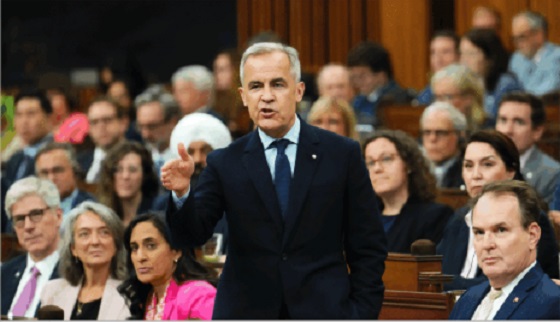
 Business1 day ago
Business1 day agoMark Carney’s Fiscal Fantasy Will Bankrupt Canada
-

 Alberta1 day ago
Alberta1 day agoTemporary Alberta grid limit unlikely to dampen data centre investment, analyst says
-

 Opinion1 day ago
Opinion1 day agoCharity Campaigns vs. Charity Donations
-

 Frontier Centre for Public Policy2 days ago
Frontier Centre for Public Policy2 days agoCanada’s New Border Bill Spies On You, Not The Bad Guys
-
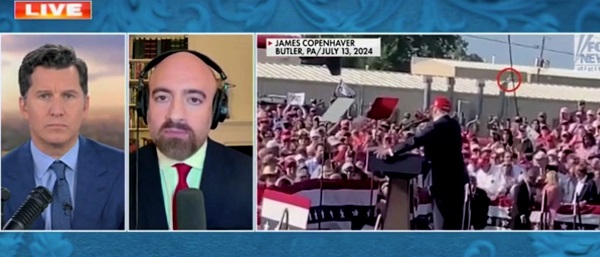
 Daily Caller20 hours ago
Daily Caller20 hours ago‘Strange Confluence Of Variables’: Mike Benz Wants Transparency Task Force To Investigate What Happened in Butler, PA
-

 Uncategorized2 days ago
Uncategorized2 days agoCNN’s Shock Climate Polling Data Reinforces Trump’s Energy Agenda
-

 Opinion1 day ago
Opinion1 day agoPreston Manning: Three Wise Men from the East, Again
-
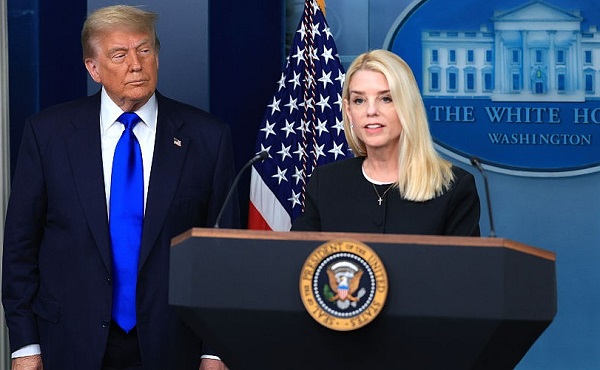
 COVID-191 day ago
COVID-191 day agoTrump DOJ dismisses charges against doctor who issued fake COVID passports


